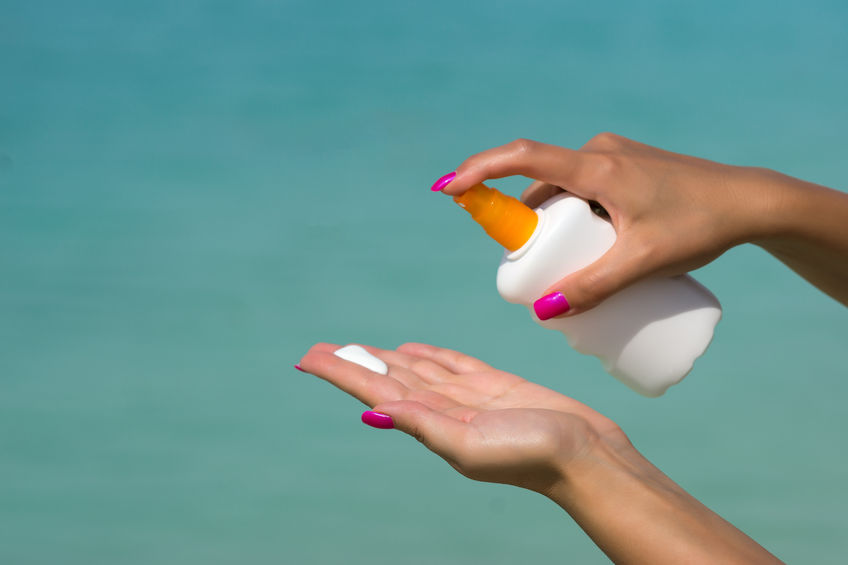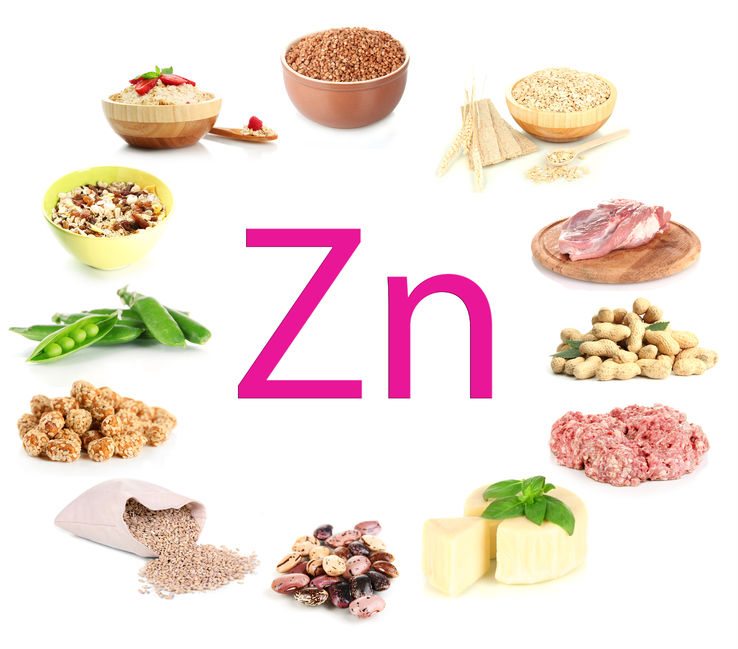 Ah, zinc oxide: Yes, it’s that pasty, white stuff that lifeguards slathered all over their faces back in the day. But it’s also a multi-tasking, dare I say talented, skin saver—and it’s not thick and icky anymore. At all. In fact, zinc oxide is used in a variety of different products, from sunscreen to diaper rash cream.
Ah, zinc oxide: Yes, it’s that pasty, white stuff that lifeguards slathered all over their faces back in the day. But it’s also a multi-tasking, dare I say talented, skin saver—and it’s not thick and icky anymore. At all. In fact, zinc oxide is used in a variety of different products, from sunscreen to diaper rash cream.
If there is one word that comes to mind where zinc oxide is concerned, it is “protection.” For centuries, zinc has been used in products offering protection from the sun’s harmful rays. It also helps to treat a variety of skin irritations and conditions. In recent years, studies have shown that zinc oxide is effective for treating everything from warts to acne to eczema.1
This is powerful stuff. You need to incorporate zinc oxide, and products containing it, into your life.
Let me explain why.
Geeking out on the Science of Zinc Oxide
Let’s indulge in a bit of science first, shall we?
Zinc is a positively charged ion. It is an essential micronutrient for humans. It’s also a very important element of protein. Why do our bodies need zinc? For several reasons. Zinc is necessary for the regulation of lipid, protein and nucleic acid metabolism as well as gene transcription (production of RNA from DNA).2 It is known as an essential trace element, or a metal that we need (in small amounts). It is necessary for human health and development.
Zinc oxide (ZnO) is considered a multifunctional substance, due to its physical and chemical properties. Zinc deficiency, first identified in 1961, is known as one of the major causes of malnutrition worldwide.3
Having zinc in your diet is vital for normal growth. Zinc also helps us maintain a healthy immune system and mental well-being. Zinc deficiency can lead to a whole host of complications, including low birth weight, abnormal fetal growth, reduced immune response, and death from infection. Zinc supplements are often taken during pregnancy, in early childhood, and by the elderly. 4,5,6
How is Zinc Oxide Used?
Now that you understand the value of having a healthy amount of zinc in your body, let’s talk about using it on your body, and your face.
Zinc oxide is used in:
Topical Ointments – Zinc oxide is widely used in topical ointments to treat minor skin problems, including burns and irritation, including chapped skin.7
Sunscreens – It is also a key ingredient in many sunscreens, offering excellent protection against UV radiation.8
Cosmetics and Skin Care Products – Zinc oxide is widely used in many personal care and beauty products. It can be found as a key ingredient in shampoos, face powders and bath soaps.

Foods – Zinc oxide is widely used as a food stabilizer and as a source in the fortification of cereal-based baby food and products like breakfast cereals, wheat, corn, bread, cakes, and pastries. In addition, because of its antimicrobial properties, zinc oxide is used in the canning industry. In fact, zinc oxide is one of the most commonly used metals for canned and sealed food containers to make the shelf life longer and prevent discoloration.9
Zinc Oxide = Infection Fighter
Zinc oxide is often used to treat abrasions and mild skin irritations, including those caused by allergies. It also works as a protective (there’s that word again!) agent, and as an astringent.10 In dermatology, aside from skin irritations, it is also used as a treatment for infections, inflammatory skin disorders like acne, pigmentary disorders like melasma, and neoplasia, or basal cell carcinoma.1
There is no denying that we need zinc in our diet to stay healthy.11 We’ve established that zinc is needed for normal growth and both mental and physical health.
Did you know that zinc is also needed for good eyesight?
The benefits of zinc are virtually limitless. It helps us fight infections. It helps wounds heal more quickly. And it may also help patients with ADHD and other psychological conditions, including depression.12,13
Pass the Zinc, Please!
Given the above information, this should probably read, “Who wouldn’t benefit from using zinc oxide?”
We all need zinc. A daily dose of zinc oxide is necessary to boost our immune system and safeguard our body from harmful bacteria that may cause certain health issues.14
Feel a cold coming on? Studies show that oral or topical treatment with zinc oxide may help to relieve symptoms, or even shorten the duration of colds.15
For the youngest among us, diaper rash can be prevented by using topical zinc oxide cream, as it acts as a barrier between a delicate baby’s skin and a diaper.
Zinc oxide can protect us from the sun’s damaging rays. We all know that sun overexposure can damage skin and lead to skin cancer. And there is something else to consider: premature aging. If you don’t want to deal with those pesky fine lines and wrinkles brought on by the sun, use a quality SPF 30+ sunscreen. It’s basically the most important thing we can do to protect our skin. Here’s the great thing about zinc oxide in sunscreen: It offers broad spectrum protection from both UVA and UVB rays.16
Whether it’s in your supplements or slathered on your skin, zinc oxide is a powerful mineral to assist in staying healthy and young looking. Remember to consult your doctor if you’re considering incorporating zinc into your supplement routine. Zinc it—just a little a bit!
2Gupta M, Mahajan V, Mehta K, Chauhan P. Zinc Therapy in Dermatology: A Review. Dermatology Research and Practice. 2014;2014:1-11. doi:10.1155/2014/709152.
3Kołodziejczak-Radzimska AJesionowski T. Zinc Oxide—From Synthesis to Application: A Review. Materials. 2014;7(4):2833-2881. doi:10.3390/ma7042833.
4Nazanin Roohani R. Zinc and its importance for human health: An integrative review. Journal of Research in Medical Sciences : The Official Journal of Isfahan University of Medical Sciences. 2013;18(2):144. Accessed September 7, 2016.
5Deshpande J, Joshi M, Giri P. Zinc: The trace element of major importance in human nutrition and health. Int J Med Sci Public Health. 2013;2(1):1. doi:10.5455/ijmsph.2013.2.1-6.
6 Simmer K, Thompson RP. Zinc in the fetus and newborn. Acta Paediatr Scand Suppl 1985;319:158-63.
7Fabris N, Mocchegiani E. Zinc, human diseases and aging. Aging (Milano) 1995;7:77-93.
8Osmond Mccall M. Zinc oxide nanoparticles in modern sunscreens: An analysis of potential exposure and hazard. Nanotoxicology. 2010;4(1):15-41. doi:10.3109/17435390903502028.
9Xie Y, He Y, Irwin P, Jin T, Shi X. Antibacterial Activity and Mechanism of Action of Zinc Oxide Nanoparticles against Campylobacter jejuni. Applied and Environmental Microbiology. 2011;77(7):2325-2331. doi:10.1128/aem.02149-10.
10Zinc Oxide Cream – Uses, Side Effects, Interactions – Canoe.com. Chealthcanoecom. 2016. Accessed September 7, 2016.
11Zinc in Diet Nutrition – Nutrition, Function, Side Effects – NY Times Health Information. Nytimescom. 2016. Accessed September 7, 2016.
12 Sinn NBryan J. Effect of Supplementation with Polyunsaturated Fatty Acids and Micronutrients on Learning and Behavior Problems Associated with Child ADHD. Journal of Developmental & Behavioral Pediatrics. 2007;28(2):82-91. doi:10.1097/01.dbp.0000267558.88457.a5.
13DiGirolamo A, Ramirez-Zea M, Wang M et al. Randomized trial of the effect of zinc supplementation on the mental health of school-age children in Guatemala. American Journal of Clinical Nutrition. 2010;92(5):1241-1250. doi:10.3945/ajcn.2010.29686.
14Zinc in Diet Nutrition – Nutrition, Function, Side Effects – NY Times Health Information. Nytimescom. 2016. Accessed September 7, 2016.
15Zinc ‘shortens duration of common cold’ – Health News – NHS Choices. Nhsuk. 2016. Accessed September 7, 2016.
16Mitchnick M, Fairhurst D, Pinnell S. Microfine zinc oxide (Z-Cote) as a photostable UVA/UVB sunblock agent. Journal of the American Academy of Dermatology. 1999;40(1):85-90. doi:10.1016/s0190-9622(99)70532-3.
























































